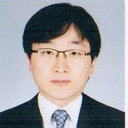Reversal of muscle fatigue in intact rabbits by intravenous potassium chloride.
Parole chiave
Astratto
OBJECTIVE
Skeletal muscle fatigue has been associated with potassium efflux from the myocytes, resulting in endogenous increases in blood potassium concentration ([K+]). Conversely, exogenous increases in extracellular [K+] potentiates contraction in isolated muscle preparations. The mechanisms responsible for these contradictory effects of [K+] on skeletal muscle function are unknown. Moreover, little is known about the effect of exogenous increases in [K+] on force generation by intact animals, given potassium's deleterious effect on cardiac function.
METHODS
We compared the response to exogenous increases in blood [K+] in rabbits given an infusion of potassium chloride (KCl) intravenously (IV) (0.2 mol/L; KCl group; n = 7) to a group given 0.9% sodium chloride (NaCl) (control; n = 7). The rabbits underwent low-frequency, isometric twitch stimulation of the left hindlimb (square wave pulses 100 microseconds, 40V, 0.25 Hz) throughout the experiment. Both groups received 0.9% NaCl (25 mL/h) during the first hour of twitch stimulation and experienced similar decreases in hindlimb forces to 70% of initial force. A continuous infusion of KCl or of saline (60 mL/h) was started, and hindlimb stimulation continued for 2 hours.
RESULTS
There were no changes in [K+] in the control group, and twitch forces progressively declined during the next 2 hours (369 +/- 47 g to 279 +/- 34 g, P < .01). Arterial [K+] increased in the KCl group from 2.6 +/- 0.1 to 10.1 +/- 0.5 mmol/L (P < .01), and hindlimb twitch forces almost doubled (418 +/- 49 g to 756 +/- 55 g, P < .01). Force frequency curves showed improved contractility in the KCl group at stimulation frequencies below 30 Hz.
CONCLUSIONS
Exogenous increases in blood [K+] potentiate skeletal muscle contraction in intact animals and reverse low-frequency twitch fatigue. A possible mechanism may be the maintenance of intracellular [K+] by hindering K+ efflux from skeletal muscle cells.


